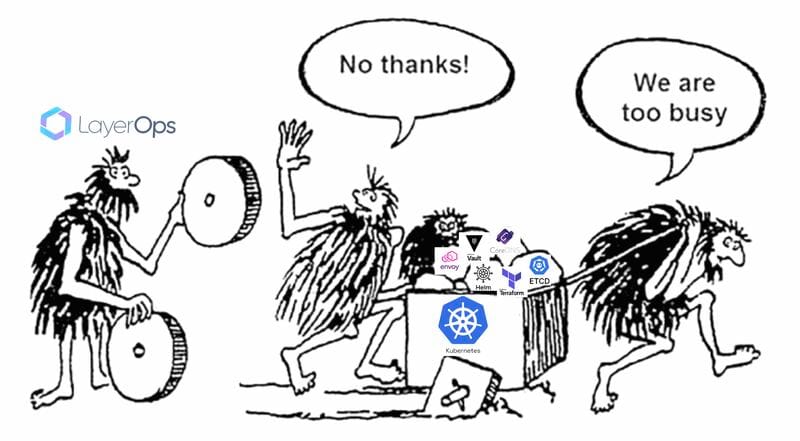When technical complexity slows down innovation

This cartoon captures a reality that many tech teams know all too well.
We get so absorbed in the day-to-day management of infrastructure that we no longer have the time – or the headspace – to step back and adopt better tools.
Take Kubernetes for example. It has become an undeniable standard, but setting it up and keeping it running requires a huge investment.
On top of that comes a whole stack of complementary tools: service mesh, image registries, monitoring systems, secret managers, CI/CD pipelines… The stack keeps growing, and so does the learning curve.
The result? Many teams spend a disproportionate amount of their time just “keeping the lights on” rather than focusing on what truly creates value – their applications and services.
The paradox of modernization
We modernize to gain agility, yet we sometimes end up trapped in complexity that slows projects down. That’s exactly what the cartoon illustrates: we keep pushing the square-wheeled cart, too busy to consider the round wheel.
Multicloud and hybrid-cloud: a way out of the maze
The goal isn’t to reject Kubernetes or open-source building blocks, but rather to make them accessible differently.
By industrializing deployments across multiple cloud providers, embedding resilience and portability by design, we can free teams from repetitive infrastructure tasks.
This allows them to focus on what they do best: developing, innovating, and delivering value to their users.
Why Europe has a unique role to play
This approach is especially critical in Europe, where organizations face:
- regulatory and sovereignty requirements,
- the need to avoid hyperscaler lock-in,
- and the importance of supporting a diverse European cloud ecosystem.
Building a multicloud and hybrid-cloud layer designed for simplicity and sovereignty gives teams a way out of the trap shown in the cartoon.
Because in the end, what our developers and DevOps teams need isn’t another heavy technical burden.
It’s a lever that gives them back time, control, and the freedom to innovate.